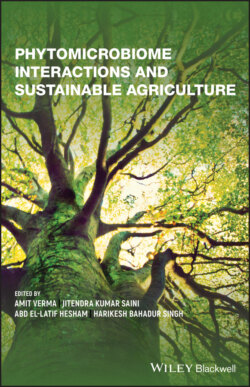Читать книгу Phytomicrobiome Interactions and Sustainable Agriculture - Группа авторов - Страница 25
2.4.1 Gel‐Based Protein Separation Techniques
ОглавлениеThe most frequently used technique with gel‐based technology is the 2DE as this method involves utilizing several characteristic features of proteins for separation such as proteins, isoelectric point, molecular mass, as well as solubility (Joshi 2017).
Here in the foremost step, the proteins are subjected to a pH gradation throughout their gel run. Hence proteins separate and precipitate when their isoelectric constant is achieved. At this point at a particular pH, the overall charge of the protein neutralizes thereby precipitating the proteins. This is also known as isoelectric focusing (IEF). IEF is followed by 2DE separation where the proteins are segregated based upon their molecular weight done by the SDS‐PAGE technique (Gorg et al. 2004). The protein separation profile is then visualized using certain staining methods that stain the proteins against the gel. Then with the comparison with a standard set of proteins, one can verify and characterize the isolated proteins. The major setback of this technology is limited reproducibility and lower sensitivity, hence only a well abundant and most characterized protein separation is recommended (Bunai and Yamane 2005). 2D fluorescence differential gel electrophoresis (2DDIGE) is an alternative method where the separation of proteins is done on the same gel using differential fluorescent dyes and a comparative is set based upon their spot intensity (Dunn 1993).
